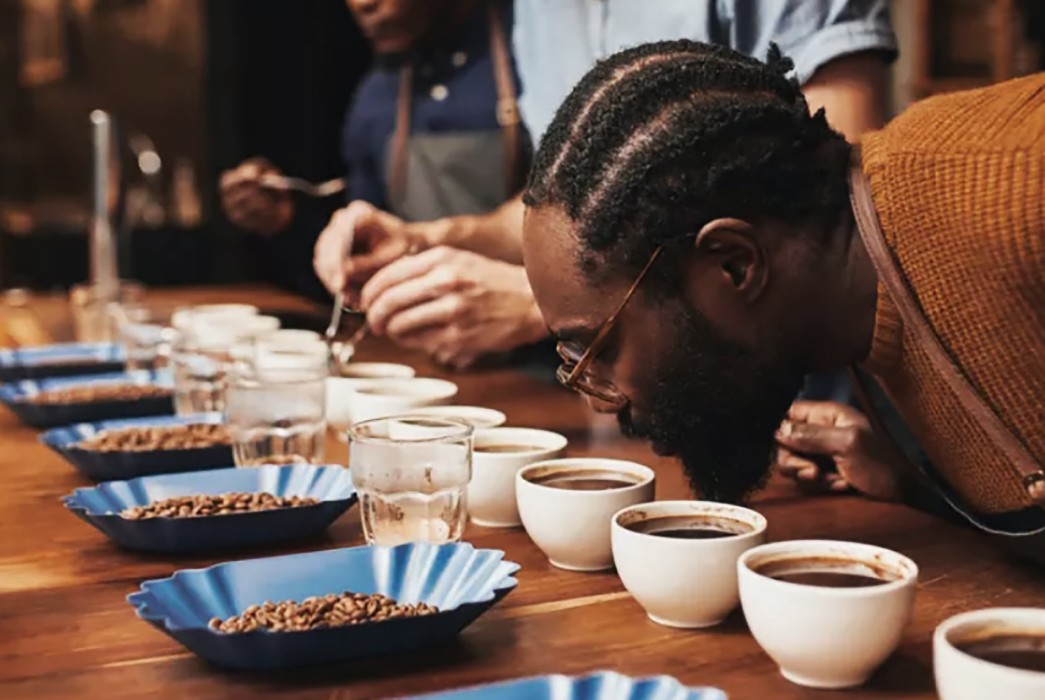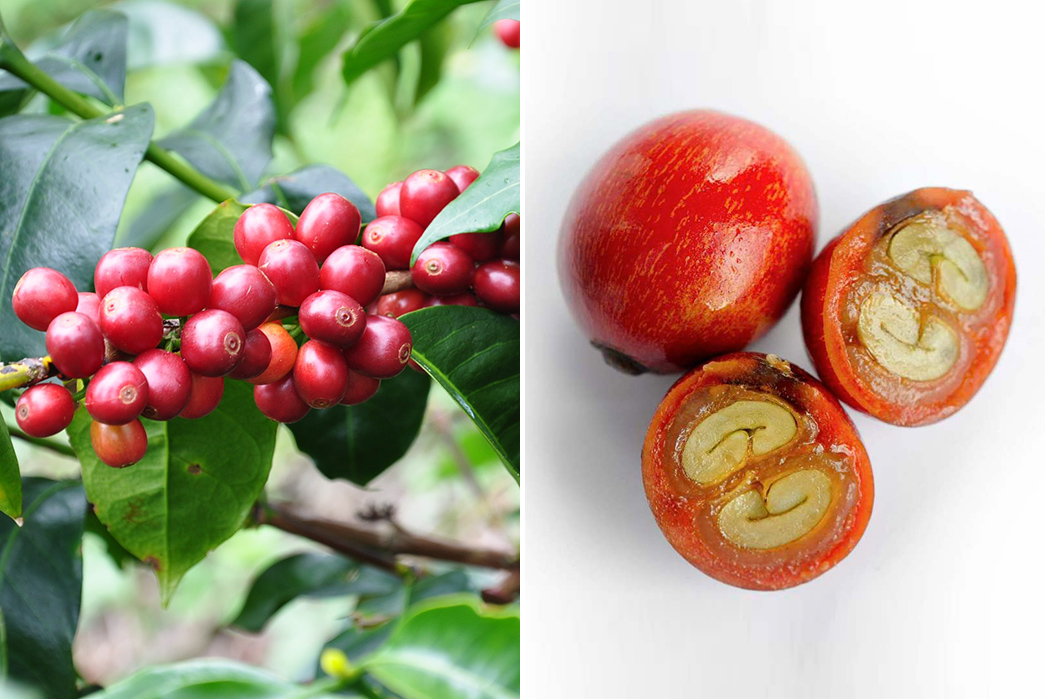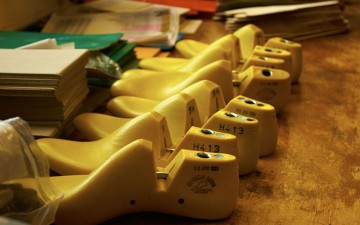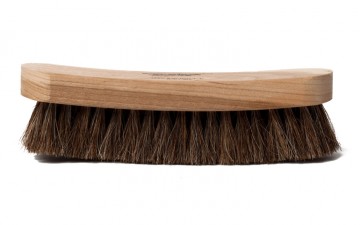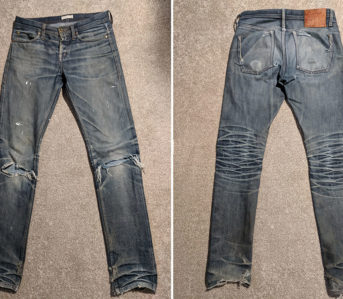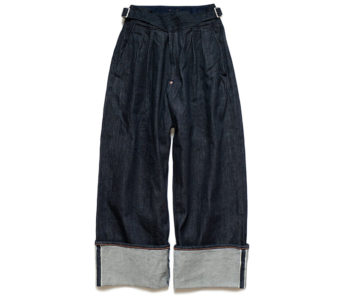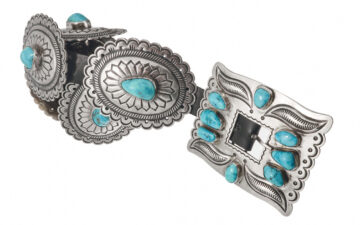So you want to ‘get into’ coffee, huh? That boiling bean slog that keeps the world running has enjoyed a recent caffeinated wave of popularity that’s all but crested. You might have heard ‘third wave’ tossed into a conversation about coffee. More than just a jolt, a hot cup can be as refined and as interesting as enology. There are even entire conventions and competitions devoted to coffee, not to mention countless books and websites.
What caught my attention about third wave coffee, as raw denim did in the very beginning, was the level of detail and amount of dedication to the craft. Seeing local roasters and baristas care enough to be obsessively passionate about a single cup of coffee made me want to know more. So, maybe you’re wondering what the fuss is about, too.
“Third wave coffee is about taking a step back from coffee as commodity and paying more attention to the actual beans themselves, their unique qualities, and, perhaps most importantly, the people who provide those beans. Thanks to third wave coffee, farmers have been able to get better pay as well as just more credit for their hard work and passion.”
Stephanie Canlas, Andytown Coffee Roasters
It may not be a pair of jeans that will fade with you over time, but a cup of coffee can become a regular, daily ritual, much like getting dressed. And, if you care about the clothes you put on every morning, it’s not too far of a stretch to say you might want to care about the coffee that gets going, also. Here’s a breakdown of what to know when your pretentious friend (me) has somehow convinced you to take the plunge into pour over. And, don’t worry, we’ll explain what pour over is.
Bean Basics
Like the peanut, coffee beans can be classified under misnomers (aka, straight up lies). Coffee beans come from coffee trees which produce coffee plants, often referred to as a coffee cherry. Classified as a stone fruit, the coffee cherries usually appear a deep reddish color and contain coffee seeds within them. This is the coffee bean. So, it’s not actually a bean, it’s a seed. But it looks like a bean, so, like, that’s how it’s named. Oh, and a peanut isn’t a nut, either. It’s a legume.
Varieties and Regions
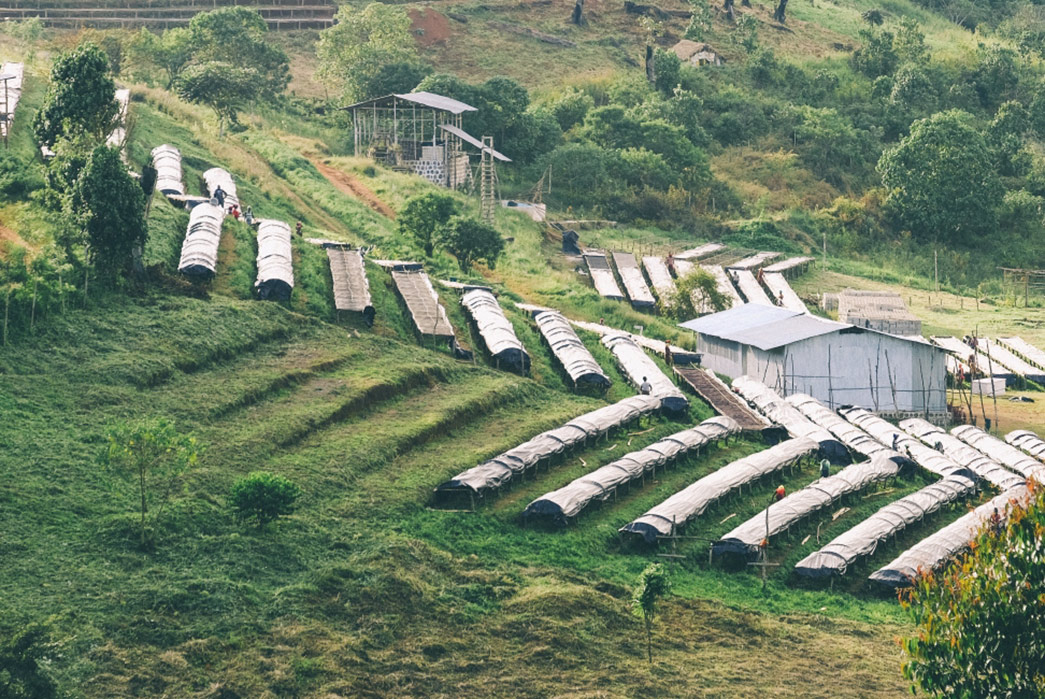
A coffee farm in Ethiopia. Via Intelligentsia
Coffee, like wine, can come from particular regions and particular farms, each of which has a distinct flavor profile from one another. Where these farms are located has a huge effect on a coffee’s characteristics. Unlike wine, different coffees can be mixed together like cocktails, combining a set of characteristics together for a unique cup. These are referred to as ‘blends’.
When a batch of beans comes from a single region, that’s referred to as ‘single origin’. Often, single origin batches will highlight the characteristics of a specific region more clearly as well as the type of processing techniques involved.
Coffee varieties can also be likened to wine varieties. As there are Zinfandels and Pinot Noirs, coffee varietals can include Geshas, Bourbons, and more.
Roasts
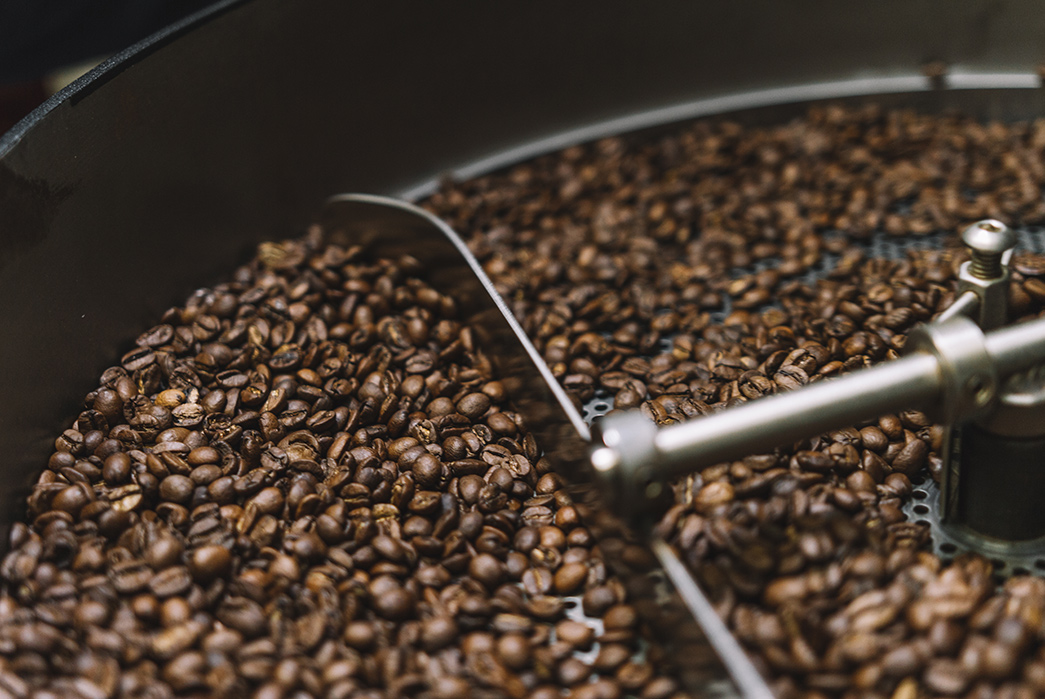
Photo: Peritus Coffee
You might be able to guess what people mean when they refer to how a coffee is roasted. Beans are cooked by roasting and can be roasted for various lengths of time, bringing out different flavor profiles depending on what the roaster is looking to achieve. Coffee beans arrive at the roaster as green beans, meaning they have yet to be roasted and appear greenish in color. While coffee can be roasted in commercial-sized roasters, many home roasters (aka your local coffee snob elitist) will roast their own beans in a conventional oven or, often, a popcorn popper.
A distinguishing factor of Third Wave coffee is the preference for lighter roasts. Beans are roasted toward the lighter end to avoid burning off the inherent flavors and characteristics of the bean. A friend of mine in the specialty coffee industry told me that her boss had put it like this: It’s like grilling a steak. You don’t want to cook the steak so much that all you taste is the grill.
Brew Methods
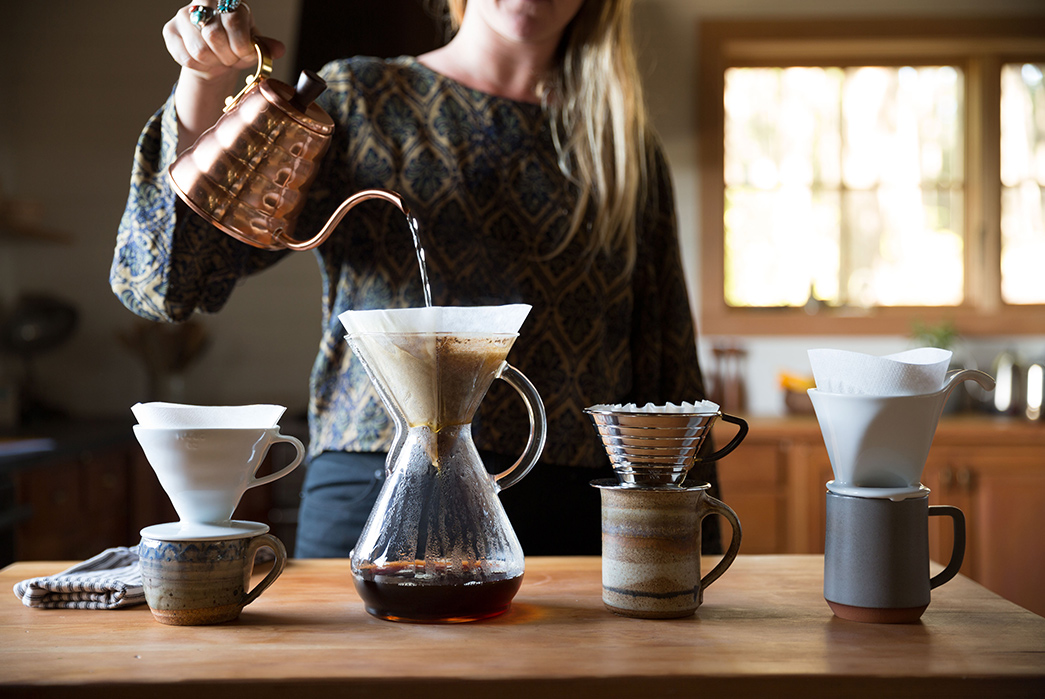
Photo: Stumptown
There are many ways to brew coffee once it’s ready from roasting. More similar to baking than cooking, coffee brewing comes down to measurements of grams and seconds. Stray a little on one component and the whole cup can be thrown into disarray and down the drain. To get a sense of how sensitive this process is, step into a cafe and you’ll definitely see a big metal machine with a bunch of handles on it. It looks like it drives the mechanical spider from Wild Wild West, but it just makes espressos.
You’ve likely encountered ‘drip coffee’ or ‘batch brew coffee’ more than most other methods, and you can find it everywhere from your local IHOP to the corner bodega to the most third wave of third wave coffee shops. If you see a tall metal canister somewhere in one of these places, drip coffee is coming from that. It’s also the coffee method you’ll see in most homes, but it’ll look more like a Mr. Coffee.
There’s often some kind of pour over brewing method in a specialty coffee shop. As the name suggests, a pour over involves hot water being poured over ground beans. From there, the liquid is extracted through a filter which can be made of paper, metal, or even cloth. Fun foot fact, there’s such a thing as sock coffee.
Coffee Drinks
You’re not going to find any Unicorn Frappés at your local specialty coffee joint. Look at a typical menu from the likes of Blue Bottle or Sightglass and you might feel bombarded with terms like ‘macchiato,’ ‘cappuccino’, and other Italian-sounding names. Third wave joe joints like these follow more traditional coffee drinks that come from Italian origins, hence their names. But don’t get overwhelmed, it’s actually simpler to follow than a Starbucks menu.
No matter what you see on the menu, 90% of the coffee drinks can be boiled down to some ratio of espresso to steamed milk.
Espresso
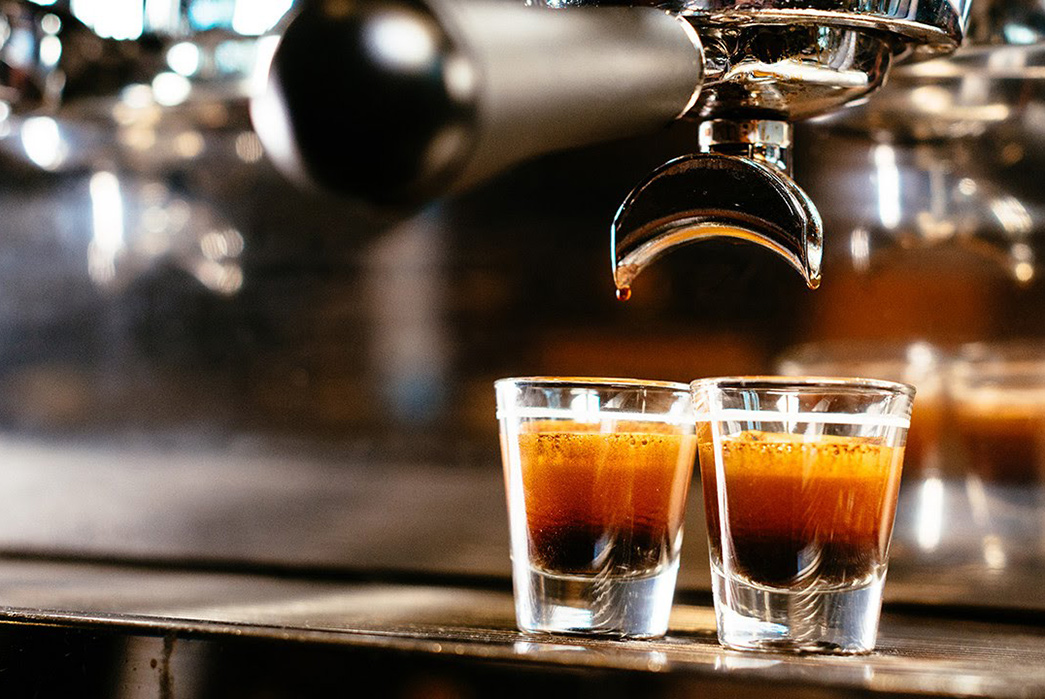
Photo: Arabica24
The most acceptable shot to take at 6 in the morning, the espresso is composed of coffee beans that have been ground and put under a lot of pressure and hot water to yield the seed sludge from which caffeine addicts get their sick fix. It’s a concentration of coffee that comes in shot glasses and often is referred to as an ‘espresso shot’. For this, there’s no milk involved. It is, however, often paired with a glass of sparkling water to cleanse the palate. But you don’t want to just throw it down your gullet like a pelican to a fresh carp. Think of it like a good tequila. If it’s quality tequila, you’ll take your time to enjoy it and sip.
Espressos have their own variations, but let’s take it easy. You’re just getting started, after all.
Macchiato
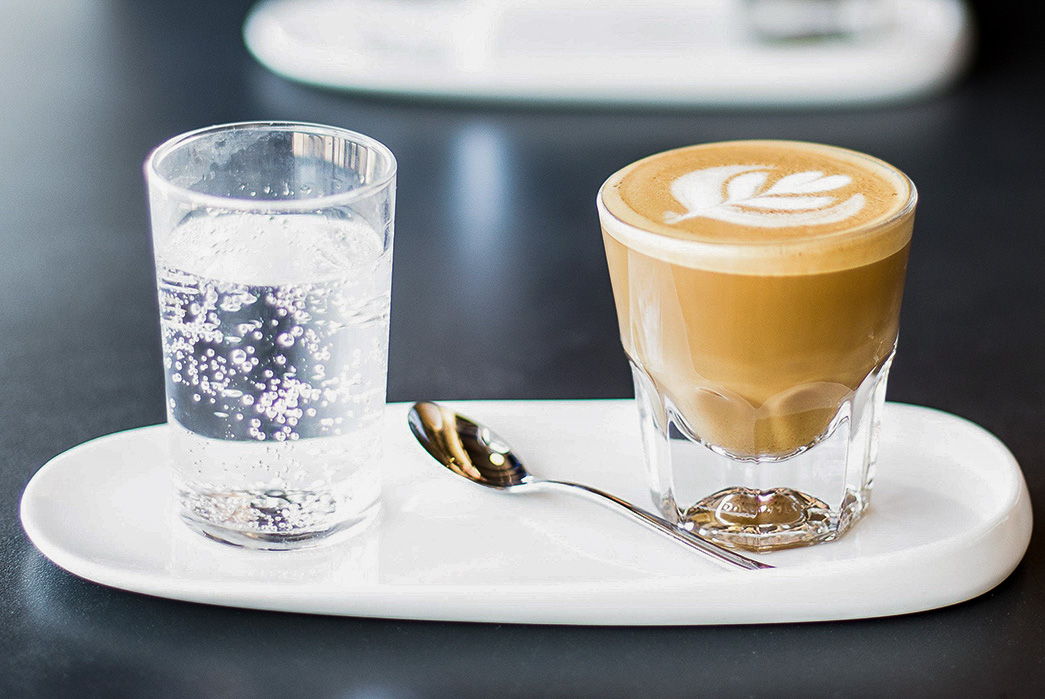
Macchiato served with sparkling water.
Macchiato’s are not those caramel-drizzled avalanches you’re used to. Instead, they look a lot like espresso shots. The only difference is a teeny tiny smidge of steamed milk in the middle. Also served with sparkling water, it’s arguably the fanciest-looking coffee drink. What says ‘pretentious’ more than the image above?
Cortado/Gibraltar
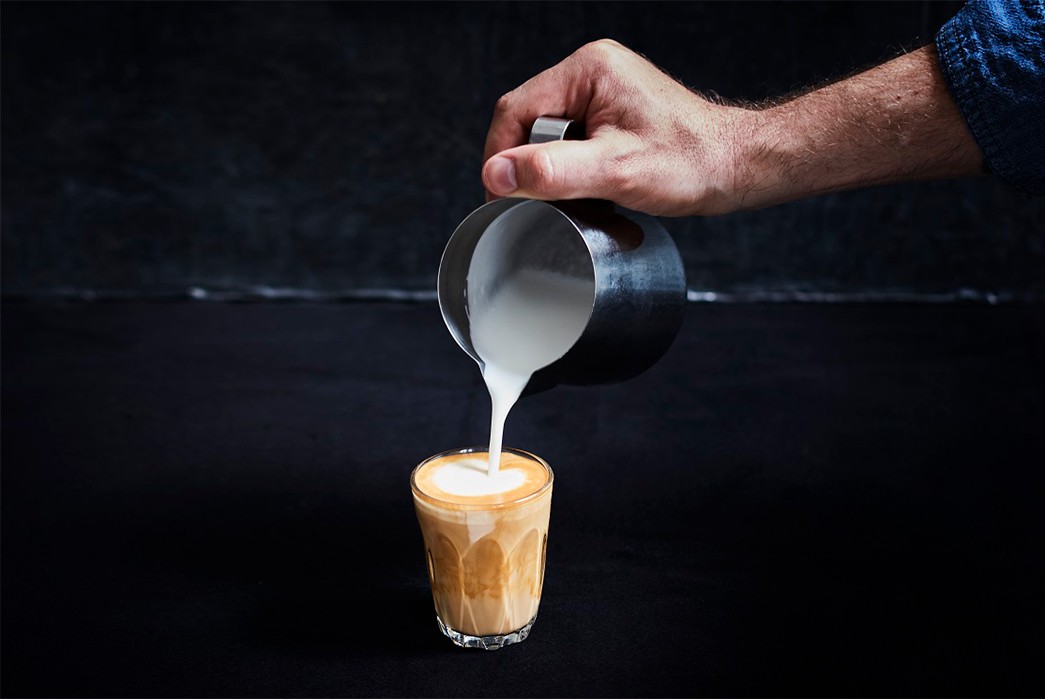
Photo: Caffe Nero
With origins in Spain, the cortado’s espresso-to-steamed-milk ratio is in its name. This is coffee drink comes in a slightly larger glass (about 4oz.) and is equal parts espresso and milk. The name is said to have come from the Spanish using milk to cut the acidity of the espresso, hence ‘cortado’.
Sometimes, it’s referred to as a Gibraltar and that’s thanks to Blue Bottle. Famously, Blue Bottle baristas were pouring themselves drinks that, more or less, amounted to a cortado. The main distinguishing factor was the glasses in which they were prepared. Made by French glassware company, Libbey, these glasses bore the inscription ‘Gibraltar’ on the bottom.
Cappuccino
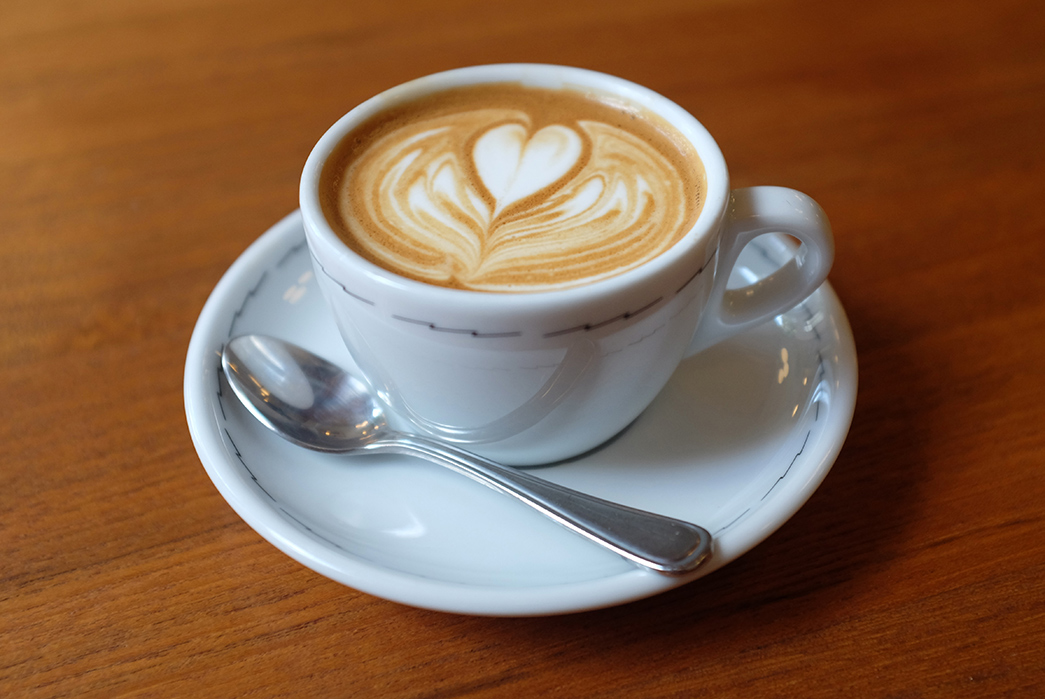
Photo: Sightglass
This has even more milk than the cortado with equal parts espresso, milk, and foam. When you want your drink to last longer than 90 seconds, but want to some semblance of coffee, drink this.
Latte
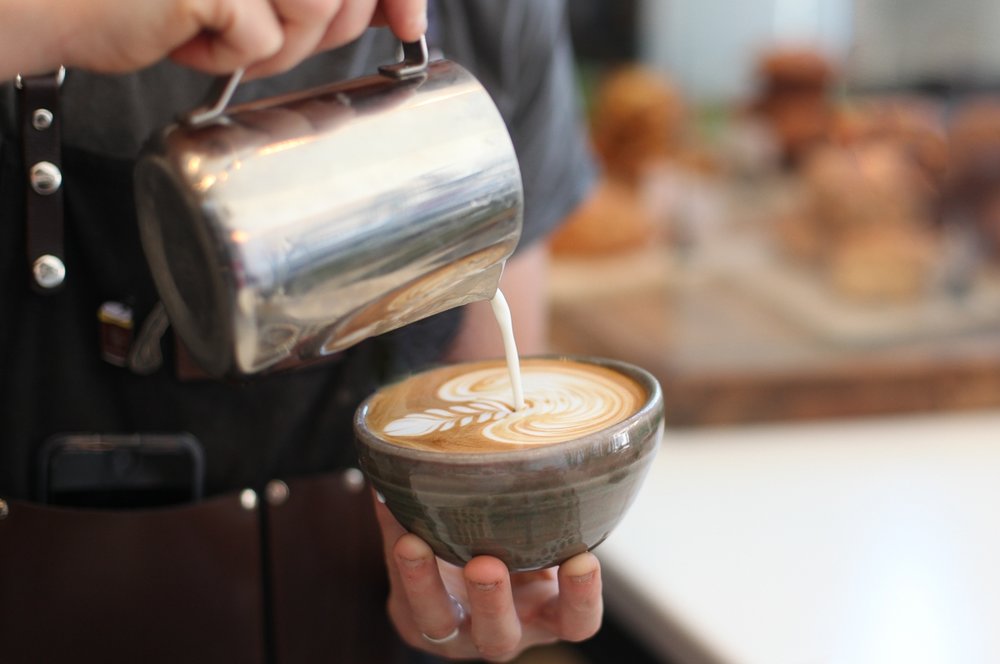
Photo: Zoe Ching
The most espresso-to-steamed-milk ratio, the latte usually has 2oz. of espresso to anywhere from 4oz. to like a ton of ounces of milk. If you’re not about to dive head first into espresso, it’s easier to start with something more familiar like a latte.
Drip
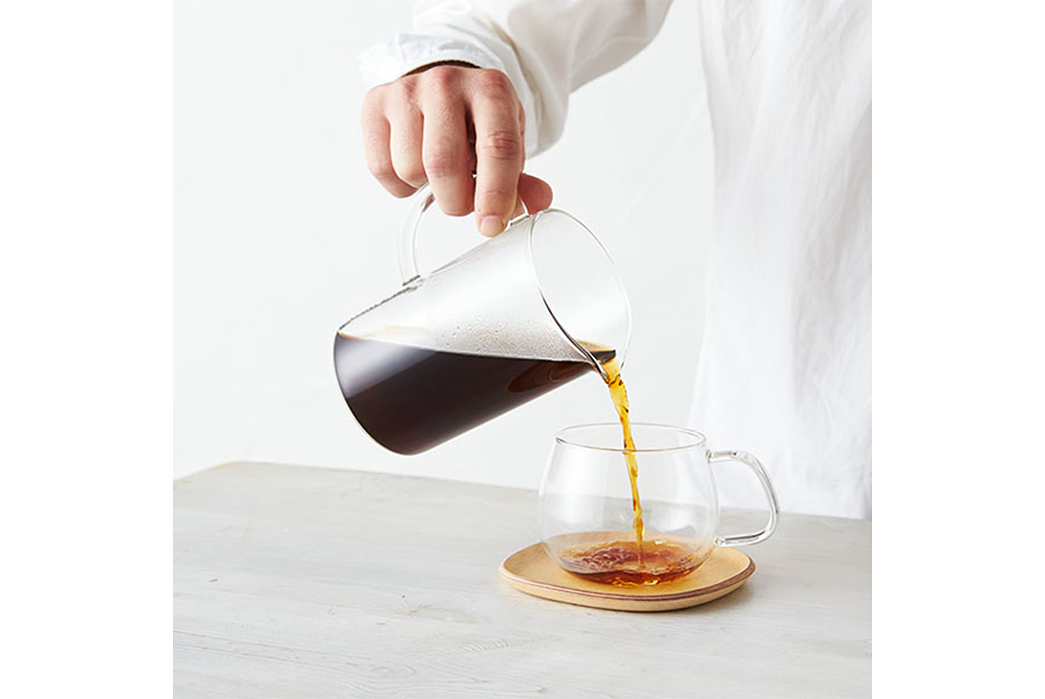
Photo: Blue Bottle
Like the espresso, drip coffee comes without any milk. This can go under the category of pour over, but when you order a drip coffee, it’s usually pre-prepared in large batch brewers and doled out via a spout like a Gatorade cooler. But instead of Fierce Fruit Punch, you get a black liquid with notes of citrus and berry. And it’s hot as fuck. It’s a quick cup that’s less involved and a go-to if you’re short on time but want a decent drink. This is where you add milk and sugar to taste. Go black if you a real G.
Drink Up
One last distinction in third wave coffee is the customer service. There’s a noticeable leap in the amount of attention given to each step of the coffee process. From the farming to the roasting to the brewing, and finally, to the serving. There’s a greater emphasis placed in the proper serving of the coffee as well as the product knowledge behind it. Some see it as over-the-top, but why go through all that effort to make a great product just to stop short and serve it like a 24-hour diner? That’s one way to leave a bad taste in your mouth that doesn’t involve drinking the coffee.
Do you need to know all of this stuff in order to enjoy a cup of coffee? Hell no. Live in ignorance and drink your diner coffee. But, if you want to pay a little more attention to what you’re putting in your mouth, which most would say is a good thing, then it’s a start. And when you do take it in, take notes. What do you taste? Is it sweet? If so, what kind of fruit does it taste like? Is it nutty? Floral? Chocolatey?
But don’t get too caught up in the terminology and minutiae. That will come later on and with a few more cups under your belt. For now, grab your self-professed pour over pundit friend and head to the nice coffee shop in the hipster neighborhood nearest you. Maybe you’ll like it. But maybe not.
